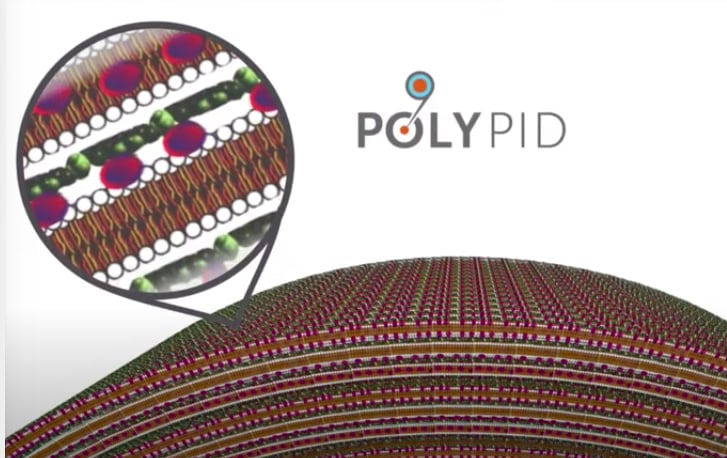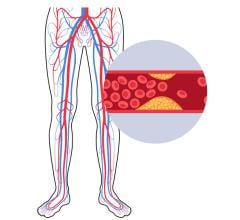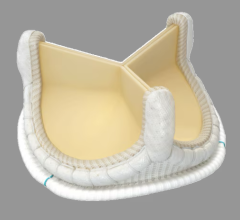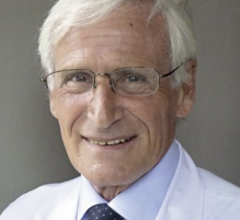
Getty Images
Surgical Site Infection (SSI) prevention remains a high priority for cardiac surgeons whose heroic efforts can be thwarted by infection. No matter how skilled a cardiac surgeon or how successful a surgery, when an SSI sets in, patients can find themselves fighting for their lives. While not unique to cardiovascular surgery, post-operative infections have severe repercussions for recovering heart surgery patients. Unfortunately, even with SSI prevention methods implemented, SSIs remain as common as 5% in cardiac operating rooms (ORs).
While standards of care have advanced, SSIs remain commonplace in ORs across the U.S. and are associated with a mortality rate of 3% (or 300,000 patients). They also remain the second most prevalent type of healthcare acquired infection (HAI), responsible for 20% of all HAIs in U.S. hospitals, resulting in increased readmission rates and often leading to additional seven to 11 days in the hospital.
Patients are at a higher risk of complication if an SSI sets in, as long-term antibiotic treatment is needed and re-surgery is often required, especially in the case of deep sternal infections. What is unique to cardiac SSIs is the increase in mortality risk by 40 percent after a deep sternal infection as surgeons must reopen the sternum to stop the spread of infection to essential organs near the incision site, adding another layer of complication and risk to the patient.
Deep sternal infections are therefore one of the most devastating complications following heart surgery. Its high fatality rates remain despite the use of standard prophylactic systemic antibiotics before, often during and sometimes even after surgery. Surgeons are subsequently left using traditional methods that remain insufficiently effective in reducing the rate of SSIs. Luckily, with the latest technological innovations, preventing SSIs in cardiac ORs is within our grasp.
Developing New Technologies to Overcome Surgical Site Infections
As scientists develop new solutions to help prevent fatalities in heart surgery, its high-risk nature and the impact of SSIs must be considered. Solutions for heart surgery must address various unique factors that contribute to the added complexities patients face when overcoming SSIs.
1. Increased comorbidities: The population going through coronary artery bypass grafting (CABG) surgeries are often over the age of 70 and will typically have additional comorbidities which increase the risk of SSIs,[1] such as diabetes, high BMI and a long history of smoking and/or chronic obstructive pulmonary disease (COPD). In fact, the percentage of high-risk patients going through CABG surgery is well over 30%.[2]
2. Impaired blood supply: One major consequence of CABG surgeries is a relatively impaired local blood supply. In other words, the body’s immunological response is already compromised during surgery as the procedure attenuates the immune system from reaching the surgical site via the bloodstream. Adding another layer of complexity to recovery, while preventative systemic antibiotics are administered to patients within an hour before surgery through intravenous (IV) injection, it can take days before blood flow is fully restored at the surgical site following the sternotomy.
This makes it harder for newly administrated antibiotics to penetrate the surgical site and kill bacteria in the early stages of wound recovery. Therefore, it is also difficult to prevent the prosperity of bacteria from reaching a stage where they cannot be eradicated by the immune system and/or the systemic antibiotics. Some surgeons will subsequently administer a high dose of antibiotics, such as Vancomycin powder, onto the wound before completing the operation, even though no significant clinical benefit was demonstrated in controlled clinical studies,[3] assumedly due to the relatively short time the antibiotic stayed in the wound.
3. Unstable tissue: Healing the bone after a sternotomy takes a toll on the body, typically requiring at least six months for the sternum bone to fully heal. During recovery there is continuous movements at the surgical site that are unavoidable such as the inevitable breath movements, coughing, or laughing. Surgeons therefore use different methods to keep the incision site closed and as stable as possible to allow the bone to heal. However, the common use of internal metal devices, as well as the prolonged instability of the sternal bone, may increase the risk of SSI.
4. Antibiotic resistant bacteria: The standard of care for the prevention of SSI includes administration of antibiotics prior to surgery. However, only a small portion of the administrated dose actually penetrates the incision site, and even less can pass through shortly after the surgery due to the impaired blood supply. The low local antibiotic concentration at the wound site may therefore be insufficient to eradicate antibiotic resistant bacteria. Furthermore, a higher quantity of antibiotics administered increases the risk of antibiotic resistance and exposes the patient to risks of systemic toxicity.
5. Use of Single Internal Mammary Artery (SITA) Instead of Bilateral Internal Mammary Artery (BITA): Despite the association of BITA grafting with improved long-term survival and a decreased need for repeat revascularization,[4] it is only used in 5.5% of CABG procedures in the U.S.[5] and about 20% globally.[6] Surgeons prefer using SITA which has a lower risk of sternal wound infection due to a lesser reduction in blood supply to the sternum. However, SITA often includes the uses a vein from the leg or hand which only lasts about three years. SITA use ultimately increases the likelihood that patients will need to undergo additional surgery over a much shorter period than following BITA, resulting in increased risks for patients and additional heavy healthcare costs.
Use of Apply-and-Forget Localized Drug Delivery to Prevent Surgical Site Infections
To embrace a world where cardiac surgeons do not need to face the consequences of SSI and reopen surgical wounds to combat infection, we need an effective localized solution that can bypass the limited penetration of the systemically administrated antibiotics into the surgical site. While local therapeutics have had limited or no success in the past, they can have their desired effect with some adjustments. If we pair local medication-agnostic delivery solutions that can be anchored to the surgical site and have extended-release capabilities that meet recovery needs, we can simplify SSI prevention and improve the outcome of care. Scientists have already began developing promising formulaic combinations that harness the qualities of polymer- and lipid-based localized drug delivery systems.
Polymer-based delivery systems, trapping medication within polymer structures, are often used to attenuate the fast release of the entrapped drug, while allowing the medication to anchor directly to the surgical site. The addition of lipids to the polymeric component constructs a highly organized multi-layer matrix that protects the entrapped medication and allows control over the release rate and period.
What is most exciting is that with the adoption of polymer-lipid multi-layer delivery systems in cardiac ORs we can expand the kinds of operations surgeons can perform while simultaneously improving the standard of care. With a reduced risk of both deep and superficial sternal wound infections, surgeons can feel more confident in using BITA, the gold standard for coronary revascularization, leading to better outcomes for patients and lower healthcare costs.
It is time to let wounds heal. Multi-layered, controlled and prolonged drug delivery platforms are the future of localized therapeutics and have the potential to change the standards of heart surgery care. In time, surgeons can concentrate solely on their mis-sion, healing cardiac complications, without having to worry about preventable SSIs undoing their work. By embracing new solutions for successful heart surgery recovery, I believe this reality is firmly within our reach.
About the author: Noam Emanuel, Ph.D., is the co-founder and chief scientific officer of PolyPid. He received his Ph.D. degree in immunology from the Hebrew University of Jerusalem.

The company PolyPid has created the PLEX (polymer-lipid encapsulation matrix) platform is a matrix made of alternating layers of polymers and lipids that entrap a therapeutic drug. This self-assembled matrix forms a protected reservoir that enables controlled and continuous delivery of drugs over periods ranging from days to several months. The company hopes to use the platform to help prevent cardiovascular surgical site infections.
References:


 January 24, 2025
January 24, 2025 









